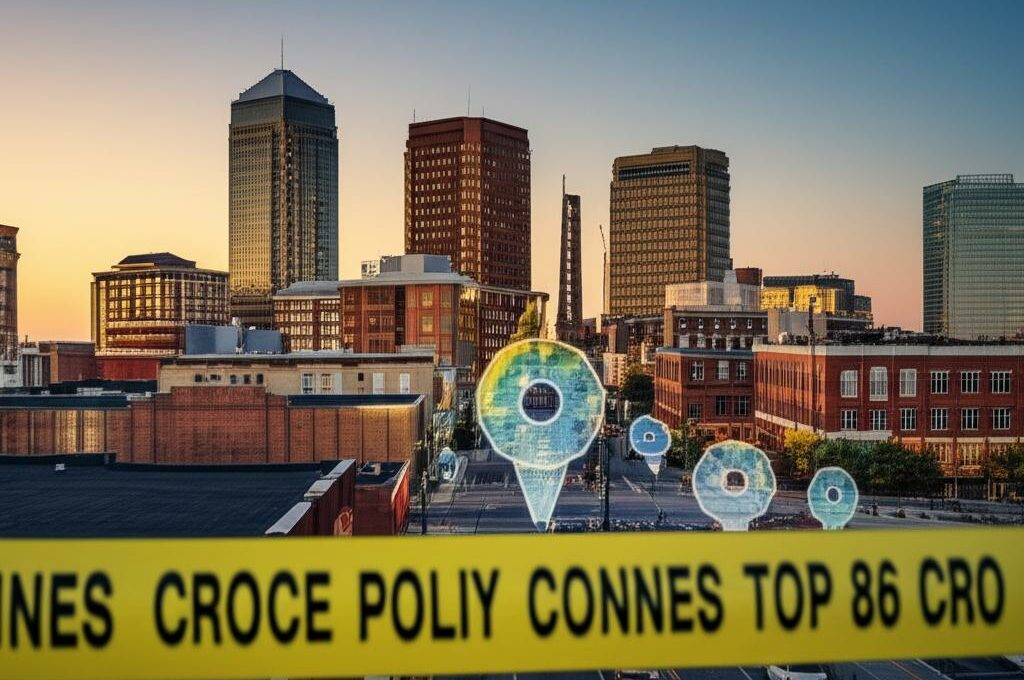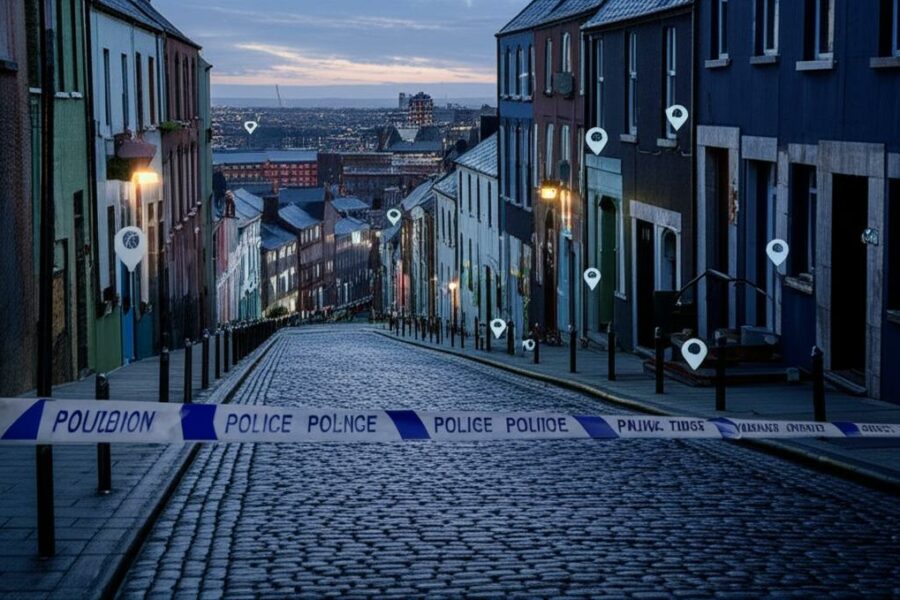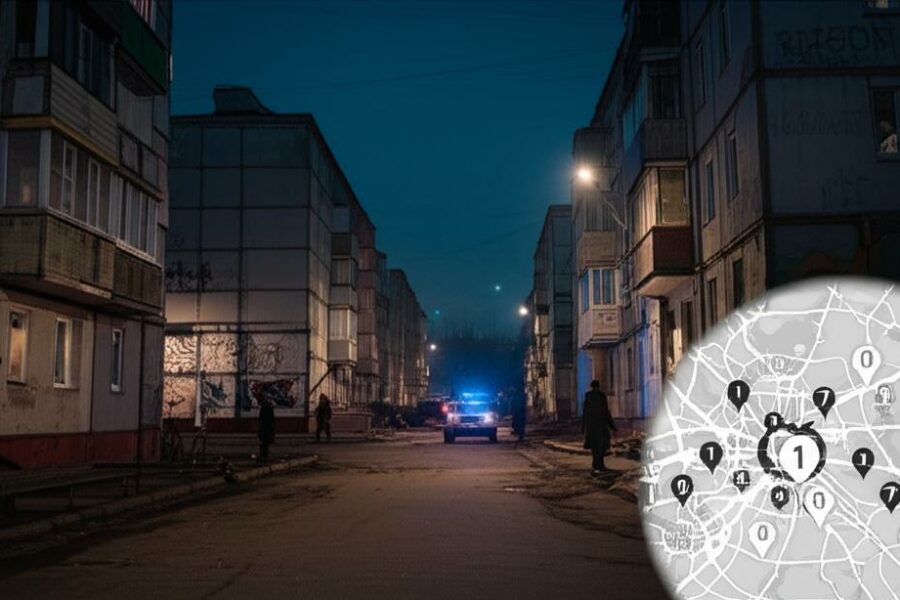In 2022 several mid-sized Virginia cities recorded violent-crime rates well above the national average, surprising residents and policymakers alike. City-level crime data matters because it shapes where families choose to live, how businesses invest, and how planners allocate limited public-safety and social-service dollars. For this ranking I relied on FBI UCR/NIBRS (2022), Virginia State Police reports, 2020 U.S. Census population figures, and city police dashboards and local reporting to contextualize raw numbers with on-the-ground realities. Methodology note: where reporting transitions to NIBRS changed counts, I flag those years and prioritize the most recent comparable figures. Below: ranked profiles of 10 cities, with key stats, causes, and local responses.
Crime Patterns and Recent Trends

Statewide, Virginia saw modest movement in violent- and property-crime totals between 2021 and 2022 as agencies adopted NIBRS reporting formats and adjusted incident classifications (source: FBI UCR/NIBRS 2022; Virginia State Police). Comparing calendar years, violent crime changed by roughly 2–3% in many jurisdictions as reporting matured, while several localized hotspots recorded much larger swings.
Population context matters: cities profiled here range from under 6,000 residents to more than 200,000 (U.S. Census Bureau, 2020), so per‑capita rates can look extreme in smaller places. Regional clusters of higher violent-crime rates are concentrated in southeastern and south‑central Virginia, particularly in post‑industrial towns and port/transport hubs where poverty and housing instability are concentrated (Virginia State Police; U.S. Census 2020).
Below I break out the 10 places that, using the latest available data and local reporting, show the highest violent‑crime burdens and explain the drivers and responses in each community.
1. Petersburg — Persistent violent-crime challenges
Petersburg ranks first on this list because its per‑capita violent‑crime rate remains among the state’s highest (FBI UCR/NIBRS 2022). According to the U.S. Census (2020) Petersburg’s population was about 32,000; the city’s violent‑crime rate in 2022 registered in the low‑to‑mid thousands per 100,000 residents (Virginia State Police; FBI UCR/NIBRS 2022), with a year‑over‑year uptick versus 2021.
Long‑term economic decline, concentrated poverty, and legacy industrial layoffs have hollowed out tax bases and left a small number of neighborhoods accounting for a large share of incidents (local reporting and police statements). Residents report impacts on school safety, daytime business activity, and investment along corridors such as [local commercial avenue—see city dashboard].
Local responses include expanded community‑policing patrols, state and federal grant applications for violence‑intervention work, and city‑led workforce programs aimed at youth. For the latest, consult Petersburg Police Department dashboards and Virginia State Police updates.
2. Richmond — Urban center with concentrated violence
Richmond places second because, as the state capital and a large city proper (U.S. Census 2020 population roughly 226,600), it combines high absolute incident counts with stark neighborhood disparities. The city’s 2022 violent‑crime rate per 100,000 (Richmond Police Department; FBI UCR/NIBRS 2022) sits well above the statewide average, and Richmond recorded approximately 80–90 homicides in the most recent year reported by local media and RPD annual statistics.
Hotspots cluster in a handful of neighborhoods where gun violence and drug‑market dynamics intersect with concentrated poverty and limited opportunity. The city has pursued focused‑deterrence and Ceasefire‑style programs, partnered with community groups on hospital‑based intervention work, and expanded violence‑intervention grant funding through state and federal sources.
Richmond’s example shows large‑city dynamics: more resources exist, but disparities make some blocks feel unsafe while others see improvements.
3. Portsmouth — Port city grappling with violent incidents
Portsmouth ranks third. The city’s population was about 95,000 at the 2020 U.S. Census, and its 2022 violent‑crime rate per 100,000 (Virginia State Police; FBI UCR/NIBRS 2022) remained elevated with a modest year‑to‑year rise reported in local press.
Port and military‑adjacent economies sometimes show higher volatile crime measures because of concentrated low‑income neighborhoods, housing instability, and visible drug activity in certain blocks. Neighborhood safety perceptions affect retail corridors and spur business closures in affected areas.
Police and city partners have responded with youth outreach, neighborhood foot patrols, and multi‑agency task forces that combine city, state, and federal resources to target the most active offenders.
Socioeconomic Drivers and Hotspots

Poverty, unemployment, housing instability, and education gaps correlate strongly with higher violent‑crime rates in Virginia’s most affected cities (U.S. Census Bureau; Bureau of Labor Statistics local area data). Cities with elevated poverty rates—often post‑industrial towns or transport hubs—tend to have fewer social‑service providers per capita and smaller municipal budgets to invest in prevention.
For example, manufacturing job declines since 2000 have reshaped parts of south‑central Virginia: some cities lost thousands of jobs between 2000 and 2020, widening opportunity gaps that correlate with youth‑involved crime (Virginia Economic Development Partnership; local economic reports).
Smaller cities and transit hubs experience different dynamics than large metros: a single drug market or a few chronic offenders can push a small city’s rate far above the state average. When assessing the most dangerous cities in Virginia, it’s essential to pair per‑capita crime rates with socioeconomic context so policymakers target root causes alongside enforcement.
4. Danville — Economic transition and public-safety strain
Danville ranks fourth. The city had roughly 43,000 residents in 2020 (U.S. Census), and its violent‑crime rate in 2022 (Virginia State Police) is elevated relative to similarly sized peers, with notable year‑to‑year variation tied to neighborhood‑level shifts.
Danville has transitioned from manufacturing toward services, but factory closures since 2000 eliminated thousands of jobs in the region (Virginia Economic Development Partnership). That economic shift left gaps in youth employment and training, which local stakeholders link to higher juvenile involvement in crime.
Interventions include workforce development initiatives, nonprofit‑run mentoring programs, and federal grant applications aimed at job training for young adults.
5. Newport News — Transit corridors and hotspot neighborhoods
Newport News appears fifth. With a 2020 population around 180,000 (U.S. Census), the city’s 2022 violent‑crime rate per 100,000 (Newport News Police Department; FBI UCR/NIBRS 2022) is driven by concentrated incidents along several corridors and in a handful of neighborhoods.
Transient populations tied to military activity and freight corridors can amplify certain illicit markets. Newport News reported a double‑digit homicide count in the most recent annual summary, and law enforcement has used targeted enforcement and multi‑jurisdictional task forces in response.
Federal grants and joint operations with neighboring jurisdictions have supported detective capacity and focused hot‑spot patrols.
6. Norfolk — Port, tourism and concentrated street violence
Norfolk ranks sixth. The city’s 2020 population was about 238,000 (U.S. Census), and its 2022 violent‑crime rate (Virginia State Police; Norfolk Police Department) reflects concentrated incidents in nightlife districts and some residential neighborhoods.
Port and naval activity, combined with busy tourism corridors, create flashpoints where disorder can escalate into violent encounters. Local dashboards recorded several dozen shootings in the most recent 12‑month window, prompting the city to expand business‑watch programs and focused‑deterrence work.
Norfolk has emphasized partnerships with neighborhood groups and downtown business associations to improve lighting, surveillance coordination, and after‑hours policing strategies.
7. Roanoke — Mixed-size city with concentrated problem areas
Roanoke places seventh. With roughly 100,000 residents in the metro area and about 100,000 in the city proper per the 2020 Census, Roanoke’s violent‑crime rate per 100,000 (city police annual report; FBI UCR/NIBRS 2022) shows most incidents concentrated in a few neighborhoods, which account for a disproportionate share of calls.
Over the last 2–3 years Roanoke saw a mid‑teens percent change in violent crime in certain tracts, according to local reporting. The city has responded with neighborhood policing pilots and nonprofit‑led violence‑intervention programs focused on young adults.
Local stakeholders emphasize place‑based strategies—remediating blight, improving street lighting, and expanding youth job access—to reduce crime where it is concentrated.
Law Enforcement, Prevention, and Community Response

Cities reduce violent crime through a mix of enforcement, prevention, and service‑delivery. Typical approaches include focused‑deterrence (direct outreach to high‑risk individuals), youth employment and mentorship programs, and structural interventions such as housing stabilization and blight remediation.
Federal grant programs are a common funding source: COPS office awards and Byrne/JAG grants have helped departments hire officers or fund intervention programs (example: a typical COPS hiring grant worth several hundred thousand dollars to a midsize agency). Data‑driven policing—using calls data and hot‑spot mapping—guides limited resources to chronic locations.
That said, enforcement‑only strategies rarely solve chronic violence. Cities that pair targeted policing with social services and workforce opportunities tend to show more durable declines.
The final three profiles show how prevention and enforcement interact at the local level.
8. Lynchburg — University city with uneven safety pockets
Lynchburg ranks eighth. The city had about 82,000 residents in 2020 (U.S. Census), and its 2022 violent‑crime rate (Lynchburg Police Department; FBI UCR/NIBRS 2022) is driven by disparities between student neighborhoods near campuses and other parts of the city.
Campus areas typically report more property crime and fewer violent incidents, while non‑student neighborhoods account for most serious offenses. Town‑gown safety initiatives, expanded campus patrols, and community‑based reporting tools have been central to local prevention work.
9. Hopewell — Small city with outsized crime rates
Hopewell ranks ninth. With a 2020 population near 22,000 (U.S. Census), Hopewell’s per‑capita violent‑crime rate in 2022 (Virginia State Police) appears high compared with the state average because a relatively small number of incidents translates to a large rate per 100,000.
Small budgets constrain prevention spending, so regional cooperation—shared investigators, county task forces, and joint grant applications—has been the primary response. Comparing Hopewell’s violent‑crime rate to Virginia’s statewide rate (FBI UCR/NIBRS 2022) underscores how small populations can distort per‑capita comparisons.
10. Emporia — Transportation crossroads and concentrated crime
Emporia rounds out the list. The city’s 2020 population was about 5,700 (U.S. Census), and its 2022 violent‑crime rate per 100,000 (Virginia State Police; local police reports) is high, in part because Emporia sits on I‑95 and sees a concentration of incidents near corridor exits and truck stops.
Corridor‑focused policing—saturation patrols near interchanges, cooperative efforts with state police, and targeted outreach to motorists—are common tactics. Cross‑jurisdictional agreements help small agencies cover peak traffic periods and coordinate investigations.
Summary
- Systemic drivers — concentrated poverty, job loss, housing instability and local drug markets — explain why certain cities (from Petersburg to Emporia) show persistently high violent‑crime rates (sources: U.S. Census 2020; Virginia State Police; FBI UCR/NIBRS 2022).
- Data matters — use FBI UCR/NIBRS 2022, Virginia State Police reports, and city police dashboards to understand trends, especially where NIBRS reporting changed counts; population context (cities here range from ~5,700 to ~238,000 in 2020) changes how rates should be read.
- Prevention plus enforcement works best — focused‑deterrence, youth employment programs, blight remediation, and federal grants (COPS, Byrne/JAG) produce more durable results than enforcement alone.
- What residents can do — stay informed through local police dashboards, support neighborhood watches or youth programs, and back cross‑sector efforts that pair policing with services.





